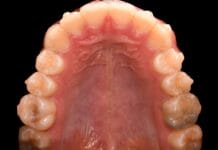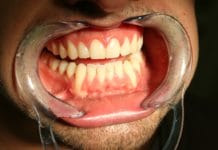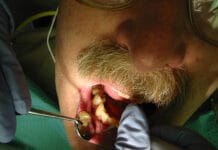The importance and effectiveness of supportive periodontal care have been well established. However, disease progression is not uncommon among individuals being treated with supportive periodontal care, requiring the patient to re-enter an active phase of therapy. An active phase of therapy might include surgical or non-surgical periodontal therapy to achieve stability again.1
A recent study aimed to characterize the periodontal breakdown during supportive periodontal care and to quantify the cost-effectiveness of periodontal therapy.1
The Study
This longitudinal study assessed comprehensive records from periodontal patients treated at the University of Michigan School of Dentistry. To be included, patients needed a minimum 10-year follow-up post-active treatment, complete medical histories (including diabetes status and smoking details), baseline periodontal charting, and full-mouth radiographs. The study excluded patients managed outside the university, those with inaccessible records, and those lacking specific details on smoking or diabetes control. Third molars were also omitted from the analysis.1
Patient classification at baseline was recorded at the first supportive periodontal care (SPC) appointment post-active treatment. This data was used as the primary starting point for the study. Follow-up spanned from this point to the last SPC visit with available data. Typical SPC visits included risk reassessment, personalized oral hygiene reinforcement, and biofilm/calculus removal.1
Collected data included demographics, medical history, tooth-specific clinical metrics for staging and grading, and information on oral function and biofilm status when available. A single calibrated investigator performed all baseline staging and grading. Charts were reviewed to track any additional non-surgical periodontal therapy or surgery during SPC. Initial therapy consisted of non-surgical periodontal therapy, with or without subsequent surgery.1
The Results
The results of this study found after successful initial therapy, about two-thirds of patients needed further active treatment. Factors like initial treatment type, compliance, diabetes, and smoking significantly influenced the need for surgical interventions during SPC.1
Interestingly, patients initially treated with non-surgical periodontal therapy had fewer additional long-term interventions compared to those who had initial surgery. While compliance is important for preventing tooth loss, its cost-effectiveness varies by patient risk and severity.1
A key study limitation was grouping stages I/II into one group and III/IV into a separate group. In practice, most patients fall into stage II or III, creating a bell-curve distribution with ‘tails’ of stage I and IV patients. This phenomenon, reported previously, may hint at a treatment incentive gap.1
Those with early stage I disease might have too little motivation for treatment because their disease state is minimal, while stage IV patients often face such extensive treatment for stability that they become discouraged. This highlights the need for strategies to better engage and motivate patients across the full spectrum of periodontal disease.1
Conclusion
This study identifies the ongoing challenges of periodontal maintenance. Nearly two-thirds of patients required additional treatment during long-term SPC. The risk of relapse was associated with disease severity, compliance, initial treatment, smoking, and diabetes.1
Those with more advanced disease (stage III/IV, grade B/C) saw greater cost benefits from compliance, suggesting that lower-risk patients (stage I/II, grade A) might economically benefit from less frequent maintenance. These findings highlight the need for personalized, risk-based post-treatment strategies.1
Before you leave, check out the Today’s RDH self-study CE courses. All courses are peer-reviewed and non-sponsored to focus solely on high-quality education. Click here now.
Listen to the Today’s RDH Dental Hygiene Podcast Below:
Reference
- Saleh, M.H.A., Decker, A., Ravidà, A., et al. Periodontitis Stage and Grade Modifies the Benefit of Regular Supportive Periodontal Care in Terms of Need for Retreatment and Mean Cumulative Cost. J Clin Periodontol. 2024; 51(2): 167-176. https://onlinelibrary.wiley.com/doi/full/10.1111/jcpe.13909










